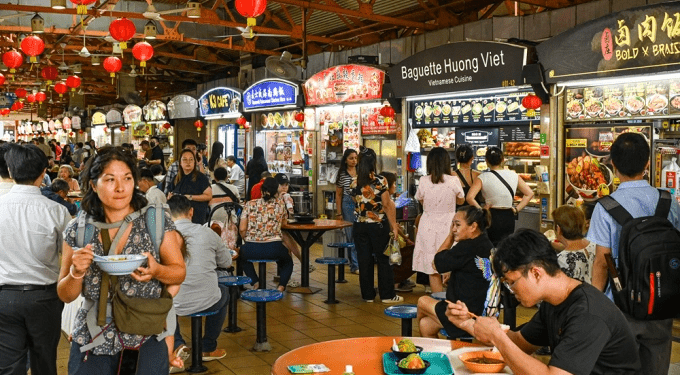Among the retail food establishments that closed and were less than five years old, 82% had never posted a profit in their annual tax declarations, The Business Times reported, citing figures shared on Wednesday by Gan Kim Yong, Singapore’s Deputy Prime Minister and Minister for Trade and Industry.
Retail food establishments cover a wide range of businesses, including restaurants, cafes, fast-food chains, food courts, hawker centers, coffee shops, canteens, takeaway and delivery kiosks, pubs, cooked food stalls, beverage stalls and food caterers.
Analysts say the high turnover and weak profitability are alarming, though not unexpected, as the food and beverage sector in Singapore is relatively easy to enter compared with many other industries.
Lau Kong Cheen, an associate professor at the Singapore University of Social Sciences, told The Straits Times that a key driver of this churn is that many newcomers jump into the industry, lured by the appeal of being their own boss, before working out a profitable business model.
Besides the newer businesses, even established names have shuttered. Among the more well-known closures this year were Michelin-starred restaurants, such as Euphoria and Alma by Juan Amador, as well as decades-old heritage eateries and even some international chains.
Many operators have pointed to rising rent as a major factor.
“Within our community, a majority of tenants have reported increases (in) rentals (of) between 20-49%,” said Terence Yow, chairperson of Singapore Tenants United for Fairness, which represents over 1,000 business owners from various sectors, including F&B.
“This is something that we’ve not seen over the past 15, 20 years,” he told Channel News Asia.
But rent might not be the only factor behind the recent wave of F&B closures in the city-state.
Many restaurant owners have also noted rising labor expenses and a shrinking talent pool.
With fewer cooks available, larger competitors started offering nearly double the usual pay to secure staff, leaving smaller operators unable to keep up even after raising wages and shortening operating hours. Strict rules on hiring foreign workers, including levies and minimum salary requirements, have further added to the strain.
The Restaurant Association of Singapore warned of a “serious manpower crisis” in March and urged the government to review foreign worker quotas.
Despite the large number of closures, 3,357 new food outlets opened in the first 10 months.
Professor Lawrence Loh from NUS Business School said this constant stream of new entrants intensifies competition, as more businesses fight for the same pool of workers, contributing to the high turnover in the sector.
“Going forward, we expect churn rates to be even more dynamic, with the attractiveness of the Singapore F&B market for international entries,” he added.





